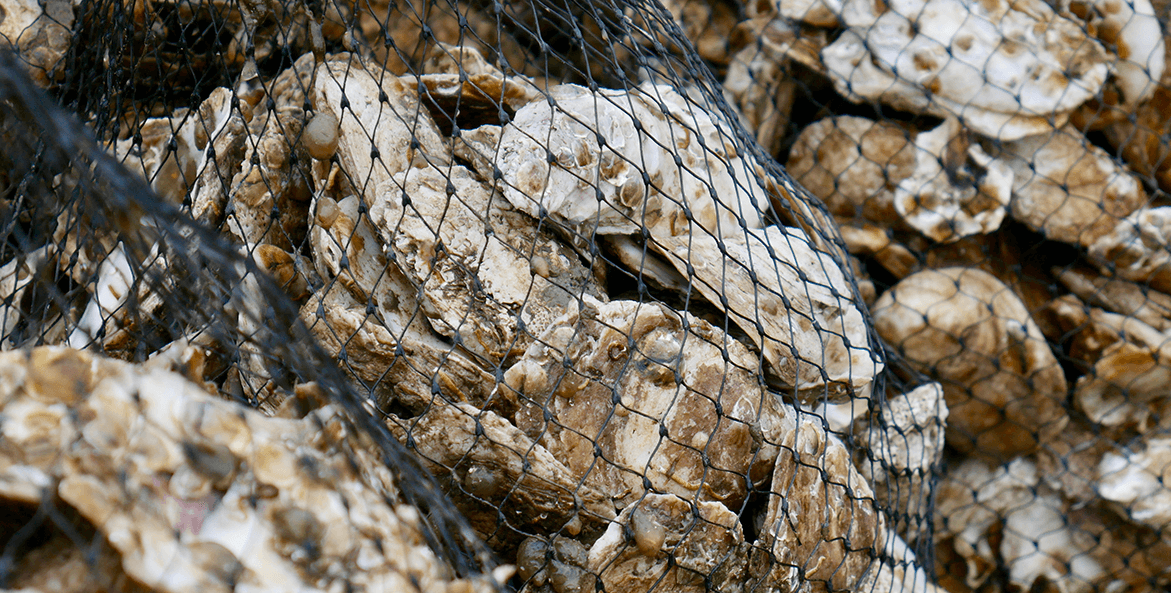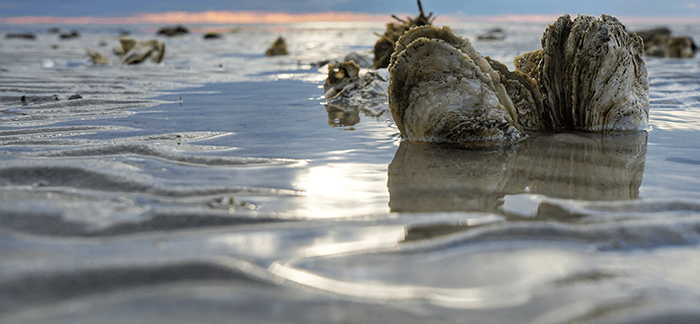Q. Can you give me a quick overview of how the oyster gardening program works?
A. Oysters are the Chesapeake Bay's best natural filters. They also provide essential habitat for fish and other Bay creatures. Unfortunately, though, today's oyster population is a fraction of its original level. The Chesapeake Bay Foundation's oyster gardening program gives people the opportunity to help bring back this vital species by growing oysters alongside their docks. Once grown, the adult oysters are returned to the Chesapeake Bay Foundation for planting on sanctuary reefs.
New gardeners are required to attend a training seminar, from which you will leave with everything you need to grow oysters, including cages and spat (baby oysters). You will then tend to these oysters for a full year. Keeping oysters in suspended cages allows them maximum exposure to oxygen and plankton, which means they will grow faster than they would in their natural habitat on the Bay bottom. These larger, year-old oysters have a greater chance of surviving once they are planted on sanctuary reefs than they would if we simply took them right from the hatchery as miniscule spat and planted them.
After growing your oysters for the year, you will return them to a CBF oyster gardening roundup event for planting on sanctuary oyster reefs. If you are interested in continuing the program, you will also pick up your new spat and continue growing oysters for the next year all over again!
Q. How can I get started in oyster gardening?
A. Come to one of the oyster gardening seminars that are held throughout the Virginia watershed. Join our email list to be the first to find out about upcoming seminars.
Q. What type of dock and water conditions do I need to grow oysters?
A. Oysters can be grown at your private residence, your vacation home, or even at a friend's house. If you do not have private access to a waterfront dock, CBF works very hard to ensure availability of public growing locations such as marinas, community docks, and public parks that partner with CBF’s oyster gardening program and allow use of their space.
The oysters must be grown in cages suspended in water with a salinity of at least eight parts-per-thousand for your oysters to thrive. Most places in the Bay meet this requirement, but there are 'boundaries' beyond which you cannot grow them due to lack of adequate salinity.
The 'boundaries' are as follows.
In Virginia, you cannot grow oysters
- west of the Rt. 360 Bridge in Tappahannock;
- west of West Point on the York River;
- west of Williamsburg on the James River;
- south of the High Rise Bridge on the Southern Branch Elizabeth River;
- east of the Twin Bridges on Eastern Branch Elizabeth River;
- south of Virginia Beach Blvd on Eastern Branch Lynnhaven River;
- and south of Laskin Road on Linkhorn Bay.
Your site must also have a minimum water depth of one foot, even during extreme conditions. The oysters will not survive if they become smothered in silt or if there is a freeze and they are exposed out of the water. They will not die if there is a freeze and they are suspended under the water’s surface. You can tie your cages to a dock, pier, bulkhead or pilings as long as they are suspended within the water at least six inches off of the bottom.
Q. Do I need a permit to grow oysters in your program?
A. Yes. You will need to fill out a Noncommercial Riparian Shellfish Growing Permit Application through the Virginia Marine Resources Commission. We walk through this process step-by-step with you in our oyster gardening seminars.
Q. How much time can I expect to spend tending my oysters, and what other commitments are involved?
A. Oyster cages need to be kept clean. When the weather is warm (May through September), you can expect to clean your oysters at least once every two weeks. During the intense growing and feeding period (about April through November), you should shake or tumble them at least once a week to discourage any of the oysters from growing into and around the cage wire. If this happens, you cannot get them out of the cages without killing them. This will also dislodge any sediment and pseudofeces. This takes only a few minutes and is one of the more important steps of your care process. During the winter months, can drop down to checking on the oysters at least once a month, still making sure to shake them. In case of foul weather, be sure to check the security of your lines.
You must bring back your oysters to CBF. We will set dates and locations for oyster gardening roundup events where you can bring your year-old oysters back and pick up new oyster spat for the next year. We want to make sure your adult oysters are among those living, filtering, and reproducing on sanctuary oyster reefs, so please bring them back to us!
Q. Can I plant my own oysters on my shoreline or a nearby reef?
A. Unfortunately, no. You must bring back your oysters to CBF at one of our oyster gardening roundup events. The Chesapeake Bay Foundation holds a special permit that allows us to plant oysters onto sanctuary reefs where they will live out the rest of their lives filtering water, creating habitat for over 300 species, and reproducing!
Q. Where will my oysters end up once I return them to the Chesapeake Bay Foundation?
A. CBF will plant your oysters on sanctuary reefs in the Chesapeake Bay. We work to make sure your oysters are placed onto non-harvest reefs on or near the river in which they are grown.
Q. Can I eat the oysters I grow?
A. No. These oysters are for restoration purposes only. If you would like to grow oysters for consumption you can contact the Tidewater Oyster Gardeners Association in Virginia.



